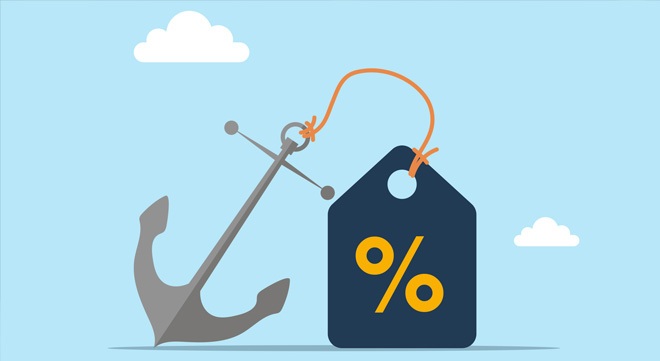The South African Reserve Bank’s push to anchor inflation at 3% took centre stage at the May 2025 Monetary Policy Committee (MPC) meeting. But while economists weigh up the pros and cons, the pressing question for cash-strapped consumers is whether hitting that lower target will require pushing interest rates higher.
According to Thuli Radebe, an economist at the SARB, the answer is “no” – not if everything follows the central bank’s scenario.
At the SARB’s recent “Talk to the SARB” forum in Cape Town, Radebe outlined how the bank’s modelling shows that anchoring inflation at 3% could, in fact, lead to a lower path for interest rates.
The SARB first adopted its inflation-targeting framework in 2000, setting a range of 3% to 6% for consumer price inflation. Around 2017, SARB shifted to targeting the midpoint of 4.5%. Since then, the bank has aimed to guide inflation towards this midpoint over the medium term.
With inflation falling to 2.8% in May and the repo rate cut from 11.75% in September 2024 to 7.25% by May 2025, the timing may be right to entrench a lower target, the SARB argues.
As the central bank and National Treasury weigh their options, Radebe’s insight shifts the narrative from “can we afford 3%?” to “can we afford not to aim for it?”
‘Lower inflation doesn’t mean lower growth’
One of the main concerns about targeting a lower-for-longer inflation rate is that it could hurt economic growth. The fear is it would require sharply higher interest rates, which could slow down the economy.
But Radebe said the SARB has done “extensive technical work” on the issue, including focusing on the sacrifice ratio – a concept that measures the cost of reducing inflation in terms of lost economic output or growth.
According to Radebe, both the SARB’s modelling and international studies suggest that the impact on growth is smaller than many assume. “They’re actually quite minuscule,” she said. In some cases, the estimates even show a negative sacrifice ratio – meaning that lower inflation could coincide with higher growth. That, she noted, was South Africa’s experience in the early 2000s.
Radebe also cautioned against placing too much weight on economists’ sacrifice ratio estimates. She gave two key reasons for her scepticism.
First, she explained, many of them focus only on short-term effects and overlook the long-term benefits of price stability. Second, they assume inflation is anchored at 4.5%, so hitting 3% would require more aggressive monetary tightening. But, she argued, “We’re at 3%.”
Referring to a scenario presented to the MPC, she said although short-term trade-offs exist, the longer-term outlook is far more positive.
“By 2027 we’re at 2%, and by 2028 we’re probably higher,” she said of real GDP growth. “Take it even further, and you have some real gains there in terms of the longer term. And I think that’s something that is not really being taken into consideration when we think about the sacrifice ratio.”
Trust, expectations, and the role of credibility
How can South Africa maintain inflation at 3% without resorting to high interest rates?
Radebe pointed to two important anchors of inflation expectations – one forward-looking, the other backward-looking.
The SARB enjoys strong credibility both at home and abroad, thanks to its independence and transparency. Radebe explained that when a central bank consistently communicates its intentions and follows through, people adjust their expectations accordingly. Over time, this helps to steer inflation towards the target.
Backward-looking expectations are shaped by past inflation experiences. If people see prices have been stable, they tend to expect that stability to continue. Radebe cited 2017, when the SARB forecast inflation converging to 4.5% – a prediction that came true. Whether expectations shifted because of the forecast or because of observed inflation trends was beside the point: expectations adjusted.
Radebe argued, with inflation around 3%, both mechanisms are working together to entrench lower inflation expectations. “The two of those combined help you to bring down those actual inflation expectations, and that’s important,” she said, adding this is particularly crucial in areas such as services inflation, where expectations drive pricing.
She also highlighted the stabilising role of the exchange rate. When markets believe a central bank will keep inflation low, the currency is less likely to weaken sharply. In turn, a more stable rand helps to keep inflation in check.
“Again, remember, this is just a scenario. This is just what could happen… This is how we fit in the market in our models,” she said.
‘Low inflation boosts stability’
Radebe pushed back against the belief that higher inflation is necessary to support investment and growth.
“I think that’s completely false,” she said. Although acknowledging her presentation wasn’t a deep econometric analysis – “academics in the room, don’t come back at me,” she joked –she argued that even basic charts showed countries with high investment rates often also enjoy low inflation.
“When you have low inflation, you don’t have to think about prices all the time. You don’t have to think about price adjustments,” she said. This kind of stability supports better long-term planning and stronger economic performance over five, 10, or 15 years.
She also pointed to the exchange rate’s long-term depreciation, partly driven by South Africa’s persistent inflation differential with its trading partners. Although the nominal rand has weakened, the country has experienced real appreciation once inflation is factored in – hurting exporters.
If inflation were more broadly controlled, any depreciation would more likely translate into a real depreciation, helping to boost export competitiveness.
“There are a lot of other channels,” she added. “This is just very high level.”
Lower inflation, lower rates
Radebe highlighted two key benefits of maintaining low inflation.
First, stronger real economic growth would support the fiscus by increasing tax revenue. Second, it would lower borrowing costs, helping to ease pressure on South Africa’s substantial public debt.
“I think everyone would appreciate how that would benefit the debt service cost outlook,” she said.
And once inflation falls and stays low, the SARB’s models show there is room to cut rates.
“Lower inflation begets lower interest rates … The idea that you have to jack up interest rates is completely wrong. It’s completely wrong in our scenario, in our analysis, in the technical work.”




